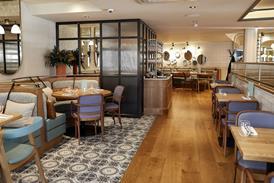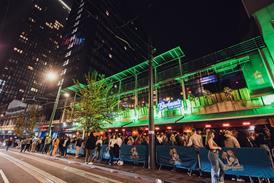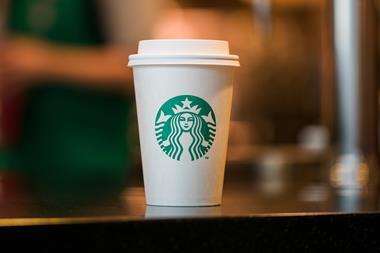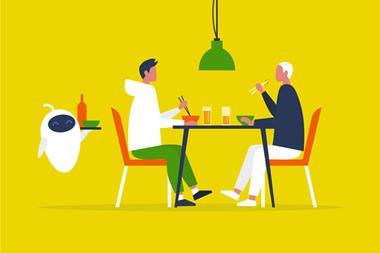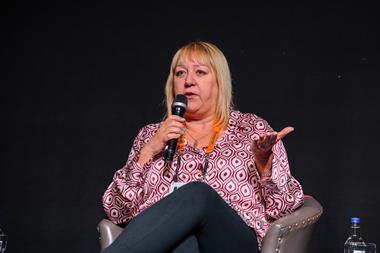Starbucks has a system of taking orders and delivering the good in an efficient manner, so much so that no one competes at the same level. Tom Weaver, chief executive of Flypay, explains how this could help your business.
Starbucks is the most successful mobile payment platform in the world. In 2015, it added ordering to its existing loyalty and pay-at-counter app experience. Just two years later, it now sees more than 7% of all its US transactions as a mobile order, with a total of 25% of all orders paid through the app. Considering Starbucks also has one of the highest transactions per store and frequency of visit rates, operators can appreciate this is indeed a very large number of transactions.
The brand’s original strategy was designed to beat queues at the till. However, some stores started to experience new queues forming at the pick-up counter. Additionally, there were operational issues around flow for baristas and most importantly, they announced in January, that the strategy was in fact slowing down service and alienating customers, so much so, that same-store transactions actually dropped 2%.
This led to negative media in the following months, including the Financial Times in late March declaring “pre-ordering coffee at scale is, and always was, a bad idea”.
Of course, over-reacting to a huge success story is, and always was, a bad idea too. The premise that the challenges that come with huge popularity of a service means the service is a ‘bad idea’, is flawed.
One could imagine if, say, Uber had reached a stage where its demand side (consumer volume) had outgrown its supply side (taxis), and it was simply guessing at when it could send a taxi, it could be argued that pre-ordering taxis at scale is, and always was, a bad idea. However, Uber has implemented it very successfully, and ensured supply keeps up with demand – broadly and with levers such as surge pricing (an interesting idea in itself, for coffee).
What this says is pre-ordering coffee is a massive success in demand from consumers, but requires greater efficiencies on the supply front from operators. This falls into the category of a ‘nice problem to have’.
Starbucks experiences vast volumes from pre-ordering because consumers that opt for grab-and-go coffee, want to do so as efficiently as possible without queuing. Currently, there is no other operator offering this service at scale. It also has an advantage that makes it fundamentally different to other environments trying ordering – pubs, for example – in that the person taking the order is not the same as the person making the order. This makes it simpler to implement – a trend also seen in fast food.
Despite these advantages, the real issue is that all times for prep and arrival are based on estimations. This means that wait and prep times are left very wide – generally between three and eight minutes, with the arrival time driven by the customer’s location. Currently, there is no slot system, so when order volumes across stores are very high, what tends to happen is that the next available time slot is pushed back. Instead, all orders are accepted, no matter how many, and irrespective of order size, although there are a couple of bands of time estimation: from 3-8 minutes, 4-9 minutes and 10-15 minutes, with an artificial bottleneck on the amount of orders that can be placed.
The issue in a physical store, is that the number of cashiers act as a natural bottleneck on the system. A queue forms in the bottleneck and this controls supply side. When you introduce digital ordering – and, in particular, add delivery as well, in high-volume times, artificial bottlenecks will still be required. The key is to use technology to improve the customer experience.
There are ways an operator can handle this. Some of the routes (which are called ‘order management’), vary from easy but low impact, to hard but high impact, are:
1. Wait times: Monitoring overall in-store order volumes, together with online ordering volumes, to predict more accurate wait times. The technology has the power to predict and deliver better wait-time information to customers.
2. Always on slots: Operators should aim to minimise wait times by providing slots, which can manage or restrict capacity for all orders and times. Slots could be short (two minutes) or longer (five minutes). The store could opt to slow this down or even turn off manually in very heavy periods. Once a slot is filled, the customer can only order to the next slot. The operator then sends the order through for that slot just in time. There could be a nice user interface around the estimated prep time (think Domino’s Pizza Tracker).
3. Intelligent slots: Operators should look to minimise waiting and optimise efficiencies by assessing wait times in low-volume periods that don’t require slots. However, in higher-volume times, turn on the slots.
4. Capacity managed: Use capacity management technology, such as QSR Kitchen Automation at the barista counter to feed orders from the EPoS, track wait times and progress (think ‘Domino’s Pizza Tracker’). When the drink is ready, an ‘order ready’ message goes to the customer.
According to Business Insider, it would appear Starbucks is exploring wait times and slots. “One type of solution that Starbucks has not mentioned is tech-focused: adjusting the app to either provide customers more accurate wait times” (or as I mentioned above ‘slots’), to better space out how mobile orders are placed at stores.”
All this becomes critical when an operator also takes into consideration delivery at scale – and particularly when planning to use multiple delivery services at once. Having one system that can communicate wait times, capacity, slots, stock and much more is critical to operational efficiency. Operators also need to ensure that one system doesn’t deliver a massive order if the others recognise the store has a backlog back-of-house – this is something we are working towards with our Flyt platform.
There may, of course, be a wide range of alternative bottlenecks too. We’ve mentioned surge pricing in taxis. Why not in hospitality if it could be justified? Price is a natural bottleneck, so is choice (restricting products), although in general, the consumer will want more choice not less.
What can be learned from this?
● As an operator you can’t be fearful. Just because large numbers of consumers want to use a service, this does not mean you shouldn’t offer the service.
● There are ways of solving the problem of scale, from technological to operational.
● Customers like convenience and will adopt technology if it is marketed and useful. Operators must keep up. As a business, we started by challenging the premise that mobile ordering + coffee = failure. Operators need to remember, customers are in search of a solution that provides convenience and speed. Therefore, a product they are likely to consume frequently, has to be a recipe for success for operators. In the future, your customers will expect to be ordering through several consumer channels, so there will be more volume. The solution for operators isn’t to hope it goes away, but to consider how they shift operationally to embrace it.
■ Tom Weaver is chief executive of Flypay – a producer of mobile technology in the hospitality sector










